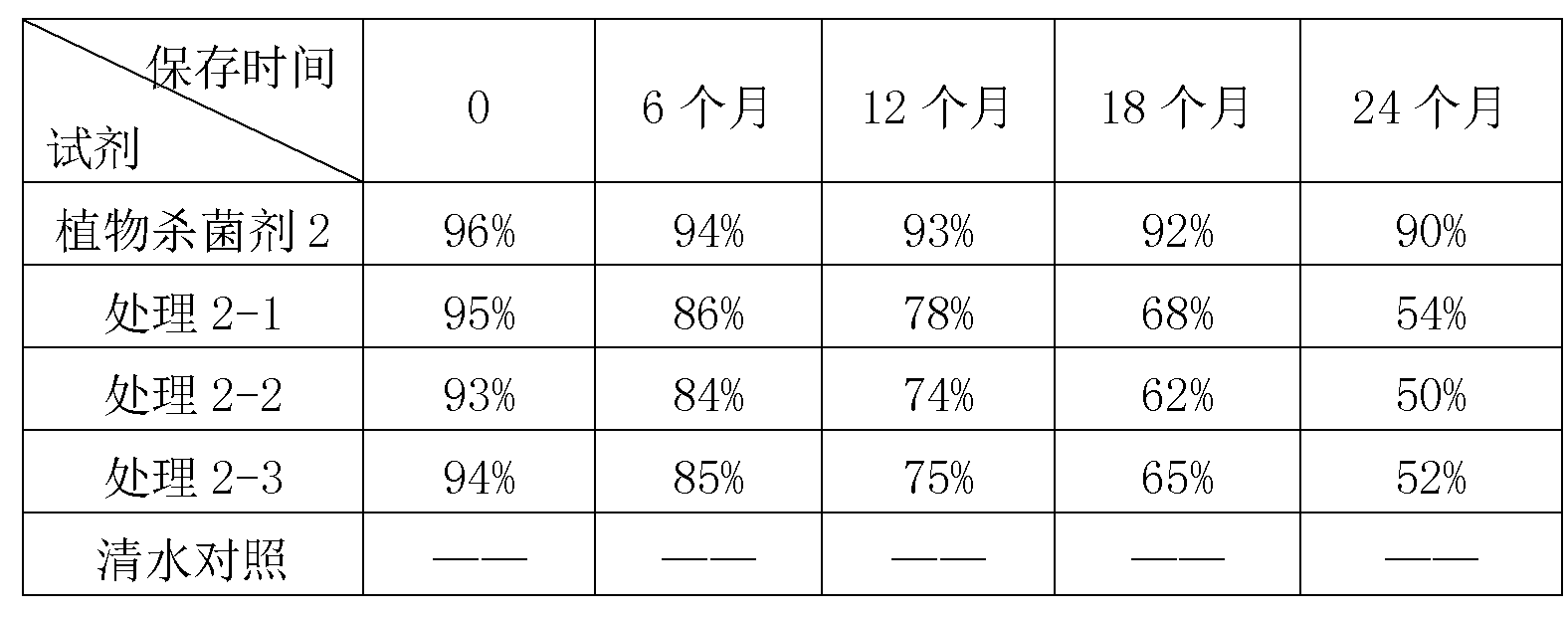Plant bactericide composition based on lactoperoxidase system
A lactoperoxidase, plant fungicide technology, applied in the directions of fungicides, plant growth regulators, biocides, etc., can solve the problems of inability to meet plant disease control, poor environmental adaptability, weak bactericidal ability, etc. Evaporation, low cost, small effect of activity loss rate
- Summary
- Abstract
- Description
- Claims
- Application Information
AI Technical Summary
Problems solved by technology
Method used
Image
Examples
Embodiment 1
[0030] Plant fungicide 1: The mass percentages of each composition in plant fungicide 1 are: 36% for the biological fungicide substrate composition, 50% for the oxidizing agent composition, and 14% for the bactericidal auxiliary composition. in,
[0031] Each component of the biocide substrate composition accounts for the mass percent of the biocide substrate composition as follows: 3% lactoperoxidase, 5% potassium rhodanide, 10% potassium iodide, 4% glycerol, 2% Tween -20, 5% dextran, 15% trehalose, 3% ethylene glycol, 6% calcium chloride, 2% potassium sorbate, and the rest is water. The pH value of the biocide substrate composition is adjusted to 9 with dipotassium hydrogen phosphate and potassium dihydrogen phosphate.
[0032] Each component of the oxidant composition accounts for the mass percentage of the oxidant composition as follows: 12% sodium percarbonate, 1.5% EDTA, 1.5% magnesium sulfate, 2% sodium silicate, 2% sodium carboxymethyl cellulose, 0.2% alginic acid, 2....
Embodiment 2
[0045] Plant fungicide 2: the mass percentages of each composition in plant fungicide 2 are: 43% for the biological fungicide substrate composition, 36% for the oxidizing agent composition, and 21% for the bactericidal auxiliary composition. in,
[0046] Each component of biocidal agent substrate composition accounts for the mass percent of biological antimicrobial agent substrate composition as follows: 0.01% lactoperoxidase, 0.05% potassium rhodanide, 0.1% potassium iodide, 0.01% glycerol, 0.01% Tween -20, 2.5% dextran, 7.5% trehalose, 1.5% ethylene glycol, 3% calcium chloride, 1% potassium sorbate, the rest is water. The pH value of the biocide substrate composition is adjusted to 8 with dipotassium hydrogen phosphate and potassium dihydrogen phosphate.
[0047] Each component of the oxidant composition accounts for the mass percentage of the oxidant composition as follows: 0.1% sodium percarbonate, 0.1% EDTA, 0.1% magnesium sulfate, 1% sodium silicate, 1% sodium carboxyme...
Embodiment 3
[0060] Plant fungicide 3: the mass percentages of each composition in plant fungicide 3 are: 50% of the biological fungicide substrate composition, 42% of the oxidizing agent composition, and 8% of the bactericidal auxiliary composition. in,
[0061] Each component of the biocide substrate composition accounts for the mass percent of the biocide substrate composition as follows: 1.5% lactoperoxidase, 2.5% potassium rhodanide, 5% potassium iodide, 2% glycerol, 1% Tween -20, 3.75% dextran, 11% trehalose, 2.25% ethylene glycol, 4.5% calcium chloride, 1.5% potassium sorbate, the rest is water. The biocidal agent substrate composition is adjusted with dipotassium hydrogen phosphate and potassium dihydrogen phosphate to adjust the pH value to 7.
[0062] Each component of the oxidant composition accounts for the mass percentage of the oxidant composition as follows: 3% sodium percarbonate, 0.8% EDTA, 0.8% magnesium sulfate, 0.1% sodium silicate, 0.1% sodium carboxymethyl cellulose,...
PUM
 Login to View More
Login to View More Abstract
Description
Claims
Application Information
 Login to View More
Login to View More - R&D
- Intellectual Property
- Life Sciences
- Materials
- Tech Scout
- Unparalleled Data Quality
- Higher Quality Content
- 60% Fewer Hallucinations
Browse by: Latest US Patents, China's latest patents, Technical Efficacy Thesaurus, Application Domain, Technology Topic, Popular Technical Reports.
© 2025 PatSnap. All rights reserved.Legal|Privacy policy|Modern Slavery Act Transparency Statement|Sitemap|About US| Contact US: help@patsnap.com



